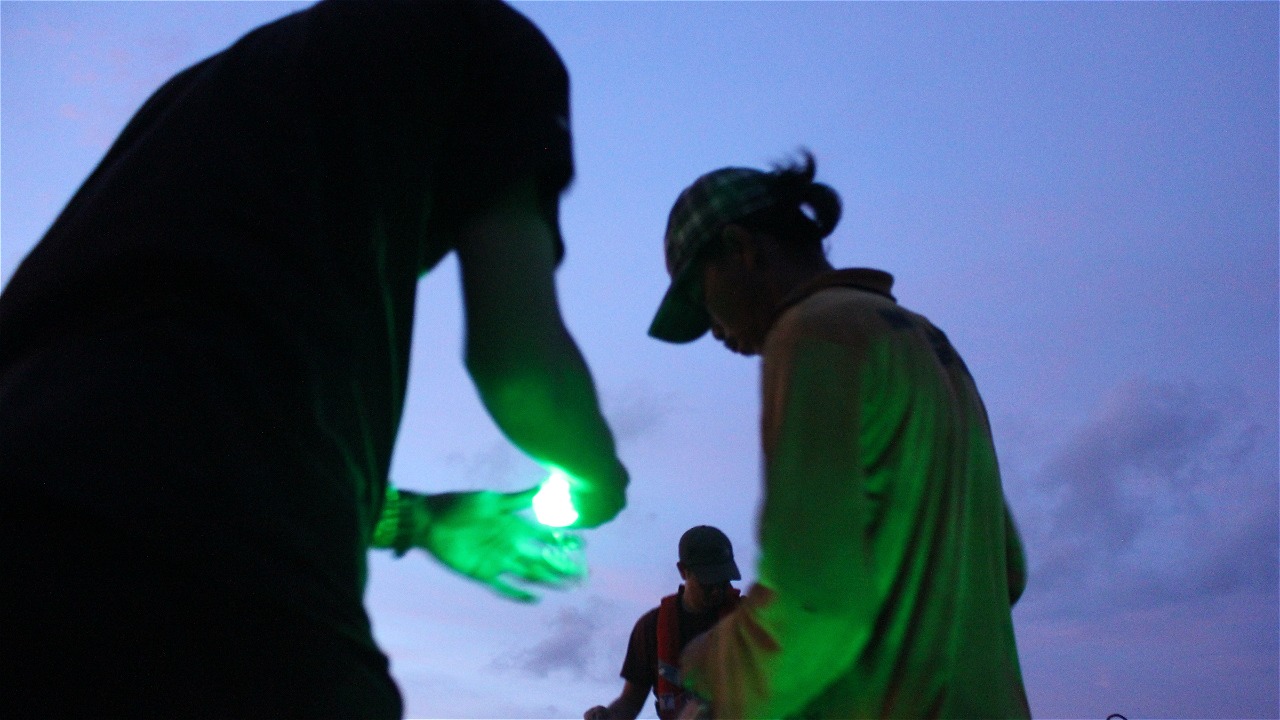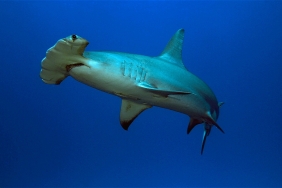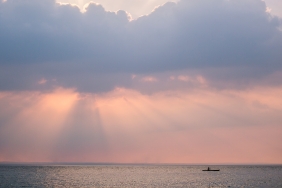LED LIGHTS IN FISHERMEN'S FISHING NETS EFFECTIVE IN MAINTAINING PALOH TURTLE POPULATION
PONTIANAK - WWF-Indonesia West Kalimantan Program presented the results of the trial of installing LED lights on fishing nets in the waters of Paloh, Sambas, in Pontianak on Monday (5/2).
The trial of installing Light-Emitting Diode (LED) lights on fishermen's gillnets in Paloh has been carried out from 2014 to 2017. The aim, among others, is to reduce the threat to the survival of sea turtle populations in the Paloh water area, which is one of the nesting beaches and important habitats for several types of sea turtles.
"The installation of LED lights on the gillnet is intended to reduce the rate of bycatch from fishing activities by fishermen on protected marine animals such as sea turtles. This is what we will socialize to the relevant parties," said West Kalimantan Program Manager, WWF-Indonesia, Albertus Tjiu.
From WWF-Indonesia's monitoring since 2009, the threat to the turtle population in Paloh Beach does not only occur on land, but also in the waters. Although successfully suppressed, turtle egg poaching still occurs. In 2017, from the data collected, poaching of sea turtle eggs still occurred in the range of 11% of the total nests that were successfully monitored on the Paloh nesting beach. Likewise, in the waters, the threat of turtle mortality caused by bycatch is very high.
"Every year, more than 500 individual sea turtles are estimated to be caught accidentally by fishermen's nets in Paloh waters. This condition not only adversely affects the sustainability of the turtle population, but also damages fishermen's nets," said Marine Biodiversity Conservation Officer, WWF-Indonesia, Hendro Susanto.
The use of LED lights is a Smartgear program that has been socialized by WWF-US and NOAA in collaboration with WWF Indonesia. In Paloh, the data collection process was carried out by two observers by directly following fishing operations with fishermen on the boat. In addition to Paloh, the same thing was also tested in Selayar Regency, South Sulawesi.
"The sea turtle is one of the endangered biota. Its existence is protected, both by national and international regulations. The light produced by the LED lamp is expected to be detected by the turtle so that the animal moves away or changes its swimming direction and will not be entangled by the gillnet," Albert explained.
The fishing gear used for the trial is two gillnet units operated by each fleet (fishing boats) at the same time and in adjacent locations. One of the gillnets is equipped with LED as a test while the other one is a control gear without any additional treatment.
From the trial, the use of LED lights installed on the gillnet gear effectively reduced the chance of turtle capture by 70%. On the other hand, the advantage of using LED lights tends to increase the number of fishermen catching the target fish (Bawal species) by 11%.
"Mitigation efforts to reduce pressure on Paloh turtles are very important, to ensure that the Paloh turtle population is maintained. Based on population data collection that we have conducted since 2009, the Paloh turtle population tends to decline. Hopefully, through the use of LEDs, it can reduce the number of turtles that die and strand on the beach, which happens almost every year. It can be said that turtles are an indicator of the fertility of a water area, as well as a guarantor of the survival of Paloh fishermen in finding catches," added Hendro.
In addition to the trial use of LEDs on gill net fishing gear, WWF also conducted a mentoring process for fishermen by demonstrating ways to handle sea turtle bycatch in accordance with the principles of best management practices (BMP) and applicable standard operating procedures. So far, 920 fishermen have been trained, with an implementation compliance rate of 34%.
"As the main actor in capture fisheries activities, fishermen certainly have an important role in the survival of sea turtles. If a turtle is caught accidentally, it needs to be handled properly to reduce the risk of death for these protected ancient animals," Hendro explained again.
The trial found various challenges and opportunities in the field. This part then needs to be discussed in order to determine the future joint steps in applying LED as a turtle bycatch mitigation tool in general. Therefore, we conducted two stages of socialization, namely at the sub-district level in Paloh on Saturday (3/2) and at the provincial level in Pontianak (5/2) by involving a number of related parties, ranging from government elements, politicians, academics, fisheries sector entrepreneurs, village officials, police officers, TNI, and mass media, and supported by the Pontianak Coastal and Marine Resource Management Center (BPSPL).
"We see the use of LED lights as an effort to realize responsible and sustainable fisheries, as well as efforts to protect, preserve and utilize protected and endangered fish species. So this is a good initiation. We appreciate WWF's efforts so that it will greatly help conservation efforts in the future," said Head of the Utilization and Conservation Section of BPSPL Pontianak, Sy. Iwan Taruna Alkadrie.
WWF seeks to encourage this LED to be widely applied by the community and the socialization process carried out will be able to generate the commitment of the parties to be involved in the use of green LED lights. Socialization to the community and parties is important to convey the success rate of using LED lights to preserve the turtle population in Paloh. This activity is expected to be able to change the perspective of many parties, where the practice of this method not only has a positive impact on the preservation of sea turtles, but also reduces the loss of damage to fishermen's nets and increases catches.
"This is also one of our efforts in preventing bycatch of sea turtles caught by gillnets. At least the parties know the benefits of installing LEDs on fishing gear. Hopefully this socialization can also be followed up by building a turtle bycatch mitigation implementation strategy in the West Kalimantan region," Albert hoped.
For more information, please contact:
Hendro Susanto (Marine Biodiversity Conservation Officer)
WWF-Indonesia West Kalimantan Program
Jl. Karna Sosial Gg. Wonoyoso II No. 3 - Pontianak
HP: 085252108113 | Email: hsusanto@wwf.id





